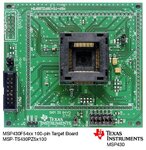Politecnico
Member level 1
Hello everybody
Although my question may seem to be trivial, I'm still looking for a convincing answer!
Regarding PCB routing, at the time of right-turn, we have the options of 45-degree routing as well as Arc routing. While I have read many reviews that Arc is much more reliable, still many professional boards (like the attached PCB made by Texas Instruments) use the 45-degree method.

Could anyone help me understand about the advantages and disadvantages of both methods?
Thanks a lot!
Although my question may seem to be trivial, I'm still looking for a convincing answer!
Regarding PCB routing, at the time of right-turn, we have the options of 45-degree routing as well as Arc routing. While I have read many reviews that Arc is much more reliable, still many professional boards (like the attached PCB made by Texas Instruments) use the 45-degree method.

Could anyone help me understand about the advantages and disadvantages of both methods?
Thanks a lot!